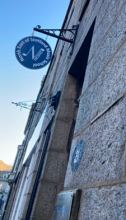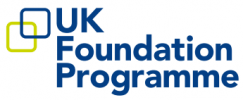The Musical Medic
Introduction
As a clarinet player and medical student, I was often asked “how do you keep your music going when studying medicine?” The answer was always the same: I made time; music has been an integral part of my life for as long as I can remember. In 2018, I won a scholarship for clarinet tuition with Professor Ian Wilson (BMus PGDipMus LGSM FHEA at the North East of Scotland Music School (NESMS). This opportunity coincided with the beginning of my MBChB degree at the University of Aberdeen. Over the past six years, my training and work as a doctor have been shaped by my experiences as a student at NESMS; there are many transferrable skills between the disciplines. In addition, the opportunities have inspired me to consider the therapeutic potential of music and the trajectory of future research in this field.
Transferrable skills
From my experiences, I have identified key skills common to both music and medicine: problem solving, communication, reflection and self-discipline. I have provided examples of the application of each skill. (NB This is not an exhaustive list and examples are based on my personal experiences; experiences will vary between individuals)
Problem solving
Problem solving is used ubiquitously in medicine for the assessment and treatment of conditions. In music, problem solving is crucial for developing technique and strategies to improve playing. For instance:
• Identifying a difficult musical passage, analysing the reason for the difficulty and finding the most appropriate solution (e.g. using an alternative fingering pattern for a phrase)
• Using basic anatomy and physics to understand the principles of note production and applying these principles to solve difficulties around speed and clarity of note production
Communication
• Non-verbal communication is an integral aspect of music performance, for example, using body language to convey emotions related to the piece, or to communicate with the accompanist (such as ready to start playing). In medicine, observing and interpreting non-verbal communication is crucial for all aspects of patient care, including informing diagnoses and understanding the patient’s perspective.
• Goal-setting in music involves shared-decision making between the student and tutor in the same way that doctors work with patients to deliver person-centred care
• In order to maximise educational benefit of a lesson, it is essential that at the beginning of the lesson, I communicate clearly with my tutor about my goals, progress and expectations. This is similar to a structured handover in medicine.
Reflection
•As a musician, I am constantly reflecting on my own playing, just as I am reflecting on my practice daily as a doctor. Reflection can be in many settings: as a soloist, with an accompanist, in a small group or in an orchestral setting.
• During solo practice, it is essential to self-evaluate continuously to identify areas for improvement and to identify aspects I wish to focus on in my next lesson.
• I also use reflection during my lessons in order to consider how I can apply the knowledge I have gained during the lesson to other aspects of my playing.
Self-discipline
•I have to prioritise tasks and organise my time effectively in order to balance medical work and training with maintaining and developing my musicianship: time has to be used productively
•Practising music requires self-discipline and persistence to achieve goals, for example adhering to a practice routine and consistently practising technical exercises
Therapeutic potential of music
Many questions have exercised my mind about the connections between music and medicine. For example, how does music influence physical and psychological wellbeing? On a personal level, during medical school I would often intersperse periods of studying with short ‘bursts’ of playing in order to reset my focus.
Similarly, after a busy day as an FY1, I find that a short period of playing provides a creative outlet of relaxation. Considering literature, there is evidence that music therapy improves cognitive function and qualitiy of life in patients with dementia (Moreno-Morales et al, 2020). Furthermore, studies show that music influences the parasympathetic and sympathetic systems, influencing physiological parameters such as heart rate (McCrary and Altenmuller, 2021). One of the major challenges in research is establishing how music can be used to enhance clinical practice, as many factors are implicated, for example the genre of muic, duration of music and personal preferences. Despite many unknowns, there is promise for music as a useful non-pharmacological intervention in many areas, including postoperative pain management (Wang et al, 2020). Overall, music has enhanced my skill development as a medical student and FY1. Not only does music provide a creative outlet and source of relaxation, but it shows promise as a non-pharmacological intervention in a variety of clinical settings.
Dr Laura Smith
F1, Scotland Foundation School
All previous HOFP articles can be found on on our HOFP webpage

